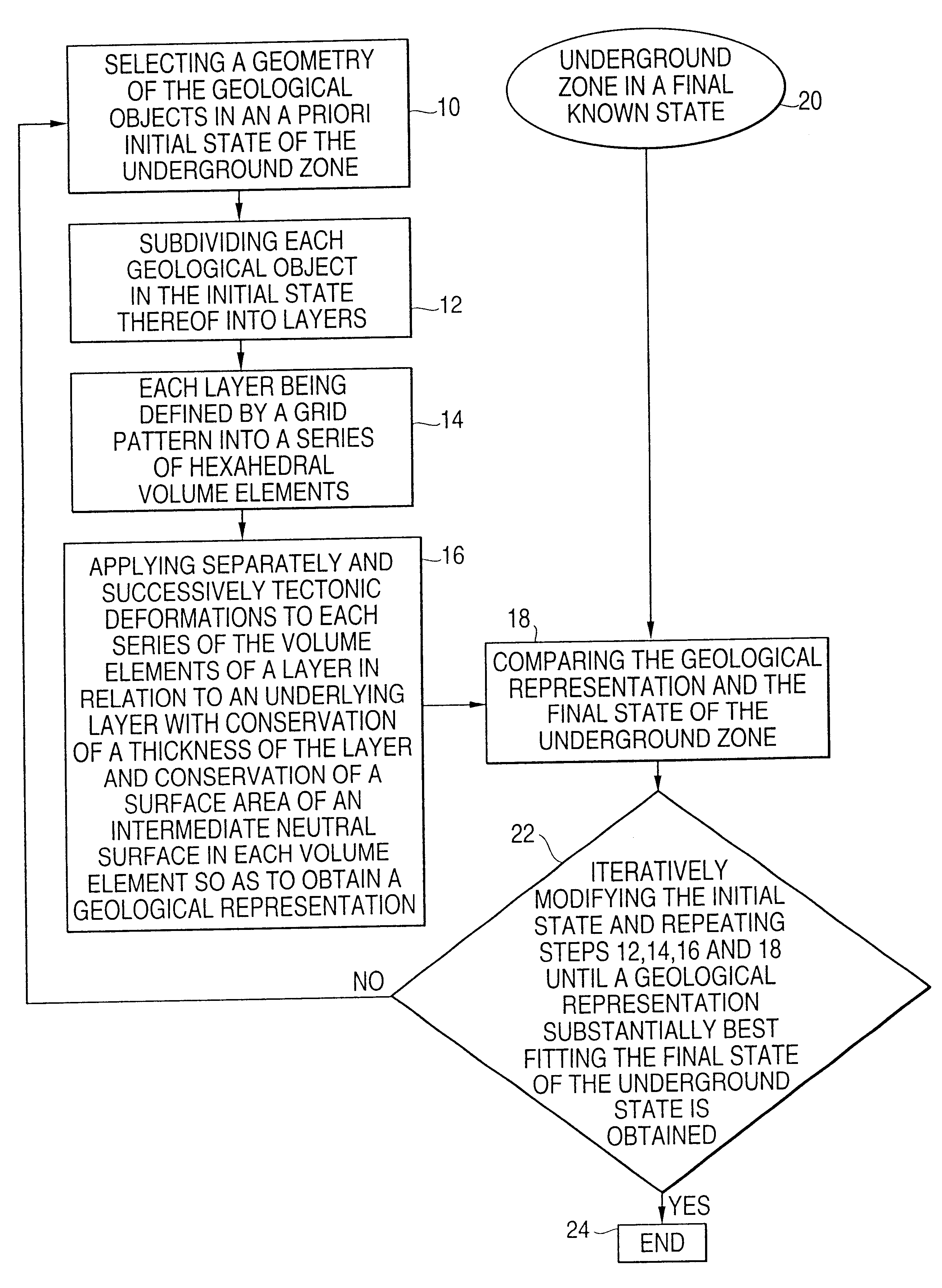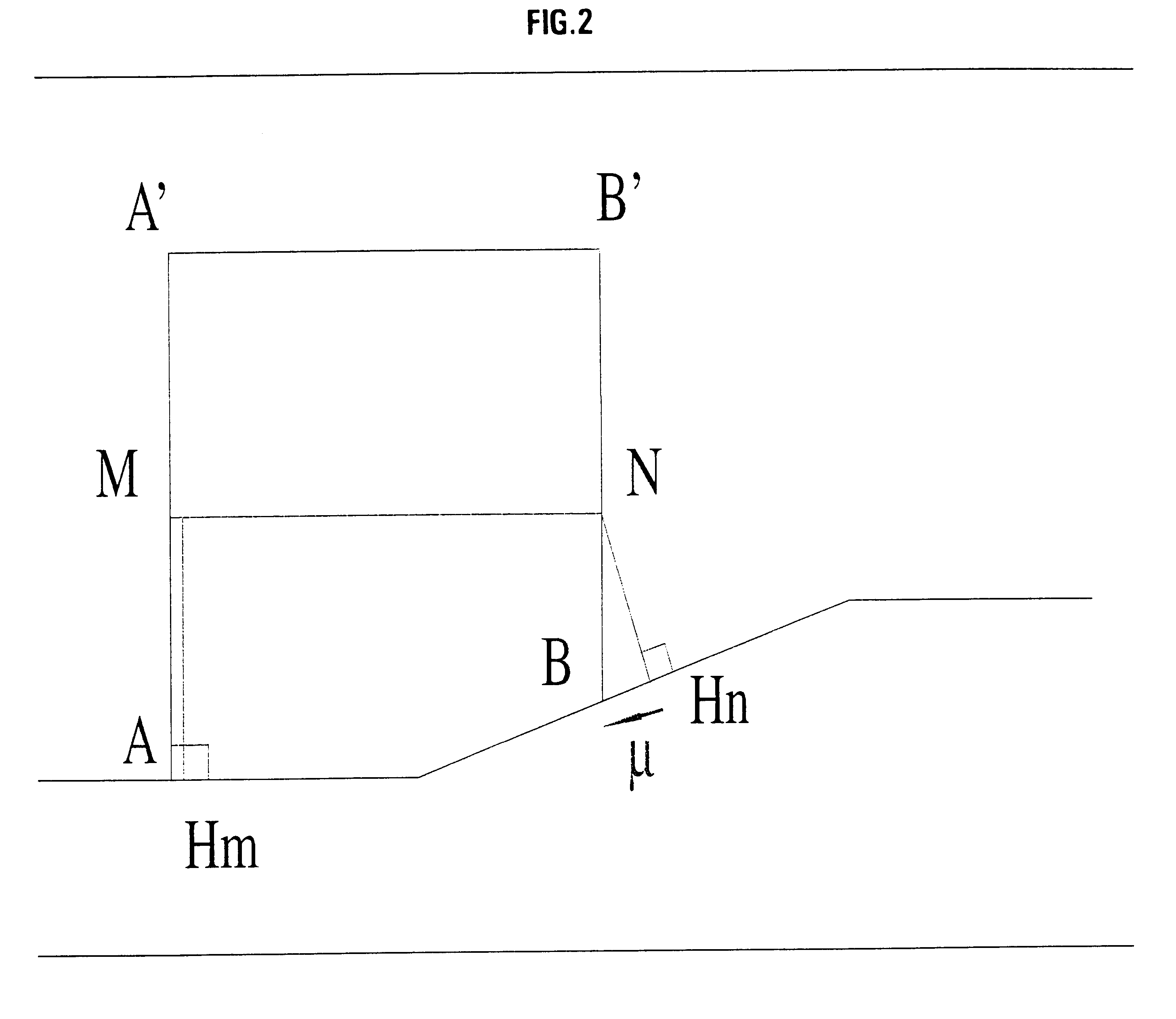Method for forming a 3D kinematic deformation model of a sedimentary basin
a sedimentary basin and kinematic deformation technology, applied in the field of 3d kinematic deformation models of sedimentary basins, can solve the problems of limited 2d or pseudo-3d> models, complex formulations with substantial calculating time,
- Summary
- Abstract
- Description
- Claims
- Application Information
AI Technical Summary
Benefits of technology
Problems solved by technology
Method used
Image
Examples
Embodiment Construction
Principle of the Model
The deformation of a layer of a sedimentary basin can be considered to be globally rigid, the inner deformations being local and situated at the interfaces between the layers or at the slope break points. This deformation by rigid blocks is made possible, on the one hand, by cataclastic processes allowing motion of blocks by fracturation-breaking at the boundary thereof, and on the other hand by a creep phenomenon through dissolution-crystallization under stress. In the latter case, the relative displacements of the blocks are combined with dissolution processes in the zones subjected to the highest stresses (stylolites, cleavage structure) and with precipitation into the empty spaces open between the blocks through deformation (crystal fissures).
To carry out the modeling operation, the zone to be modelled is divided into blocks of greater size (hm-km) that can be readily dealt with by the commonly available calculating devices, considering that the smaller-sca...
PUM
 Login to View More
Login to View More Abstract
Description
Claims
Application Information
 Login to View More
Login to View More - R&D
- Intellectual Property
- Life Sciences
- Materials
- Tech Scout
- Unparalleled Data Quality
- Higher Quality Content
- 60% Fewer Hallucinations
Browse by: Latest US Patents, China's latest patents, Technical Efficacy Thesaurus, Application Domain, Technology Topic, Popular Technical Reports.
© 2025 PatSnap. All rights reserved.Legal|Privacy policy|Modern Slavery Act Transparency Statement|Sitemap|About US| Contact US: help@patsnap.com



